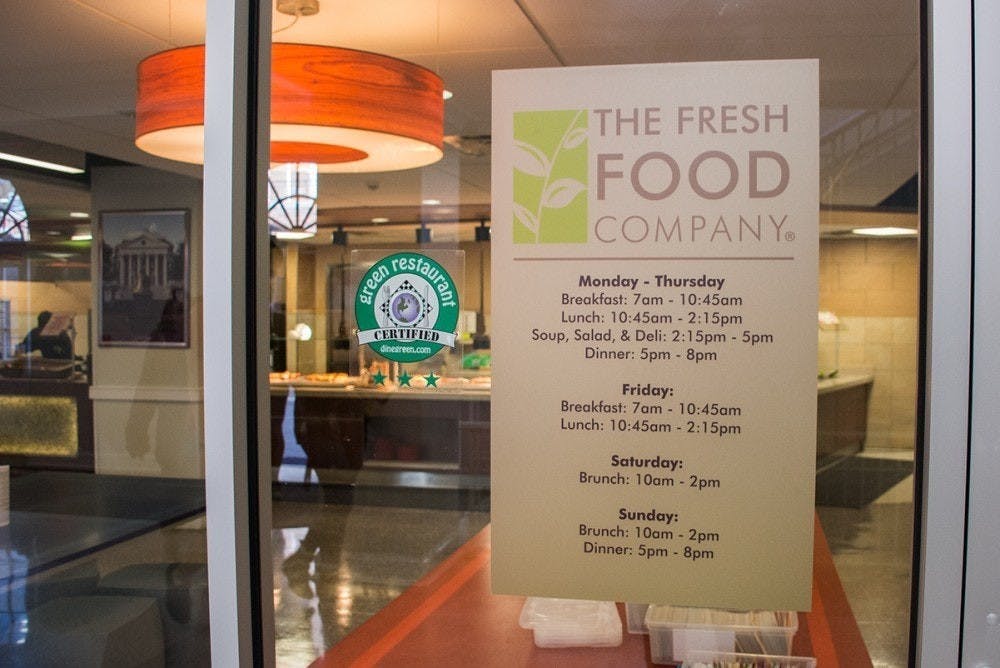Among the many costs of attending the University, dining and meal plans are a major expense for students. If a student buys an All Access 7 Plan, for example, that student will pay at least $5,100 over the academic year in dining costs — to put that in perspective, that is over a third of the cost of tuition for an in-state student. Additionally, the full cost of food will likely be much higher since this plan does not cover any off-Grounds dining. Of course, many upperclassmen do not get the All Access 7 Plan and instead opt for a combination of a smaller meal plan and eating off-Grounds or in their apartments. If, for example, a student buys a Semester 80 Annual Plan, the student will pay $2,420 over the school year and will receive 80 meal swipes and $350 Plus Dollars per semester. Anything beyond that is up to the student to cover.
However, for a variety of reasons, students often times do not use their whole meal plan in a given year. Under the current meal plan contract, all unused meal swipes and Plus Dollars are to be forfeited upon the completion of the academic year. This means that each year students are losing money simply because they did not eat on Grounds enough during the school year. Furthermore, the amount they lose can be quite significant. Given that a single meal swipe costs $10.75 under the 80 Plan, students who use 75 of their swipes and all of their Plus Dollars in each semester will lose $107.50 worth of meal swipes at the end of the academic year. This is in addition to the money students are already losing when they use the meal exchange option at various locations on Grounds that do not add up to the $10.75 each swipe is worth. One example of this is, the original Chick-fil-A sandwich meal exchange option, which rings up to around $7. Moreover, there are many students who use far fewer than 75 meal swipes over each semester and will thus lose even more money.
One may argue that students are aware — or at least should be — that meal plans do not carry over to the next year and should act accordingly or face the consequences. While this line of reasoning is not completely without warrant, it also undervalues the uncertainty that students face when choosing a meal plan, especially going into second year. Because first-year students are required to have a meal plan with unlimited swipes, they are often unaware of how large of a meal plan to buy in their second year. Facing this uncertainty, students are often inclined to choose the larger option, thinking that it is better to have too many swipes than not enough. Unfortunately, this line of thinking frequently leads to students losing money.
Second-years are not the only concern with this issue — there are also many students that are required to buy meal plans that may not need them. All students living in Hereford College, Brown College or a language house are required to buy a meal plan each semester. This means that students will likely have leftover swipes at the end of an academic year that would not carry over and may have to purchase a new meal plan at the start of the next year. Therefore, because of this policy’s negative impact on students, the University should provide students with more options for what to do with leftover swipes at the end of the academic year.
The easiest and most beneficial solution to this problem would be to allow meal swipes to carry over to the next academic year. Students pay for these meal swipes, and it is only fair to allow them to use the full plan. Moreover, the Corner Meal Plan offered by Elevate allows students to carry their meals over to subsequent academic years until they graduate — a major selling point for the plan.
There are other options the University could pursue to ensure that these swipes do not go to waste. One would be to credit back to students unused swipes or plus dollars to their SIS account to be used for other expenses. If the University was not inclined to reimburse students in some form for their unused meal plans, they could also make a permanent program where students could donate swipes to the U.Va. Community Food Pantry — an option which was temporarily offered in October of 2018.
Ultimately, it appears that the only motivation for not allowing meal plans to roll over is to make additional profits by exploiting students’ uncertainty and living situations. But should the University stand for this standard when it flies directly in the face of the interests of the student body as a whole? Of course not. Students should have ownership of the swipes they've paid for and should have more control over meals that would otherwise go to waste. For this reason, we believe that the University must ensure that students have more flexibility with unused parts of their meal plans so students really get what they are paying for.
The Cavalier Daily Editorial Board is composed of the Executive Editor, the Editor-in-Chief, the two Opinion Editors and their Senior Associate. The board can be reached at eb@cavalierdaily.com.







